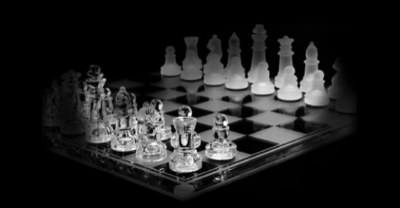
Jeux Imaginaires
is a fantasy on time and strategics as found in a famous game of chess (Karpov vs Kasparov 22:nd round, world championship 1992). Actually, the piece does not try to mimic the game itself apart from the middle section where the rhythm of the drumbeats were derived from the pondering times of the first 19 strategic moves opening the round. The game came to be more of a meditational offset for composing the music. Every night after ending my composing session in the studio I played the game (or maybe only a few moves) on my portable chessboard. Apart from it being a nice way to turn my attention from the pure musical problems for a while, I found that playing the game made me more and more aware of the likeness between chess playing and composing. Apart from the obvious similarity of the strategic opening and and ending sections (with fantasy being most important in the middle of the game), I like to think of musical components (sound objects, phrases, structures etc) as pieces (of chess) with different charge and strength that may be placed in a variety of relationships, and where the object of composing is that of finding solid constructions of relations throughout the whole musical time. Thus, playing the game as a small ritual every night released new musical ideas and composing energy without necessarily creating detectable parallels between the music and the game it self. The main sonic features of the music is derived from bells (and some other percussion), a metronome and some string sounds, representing the possible continuum between the momentary and the continuous world of sound and time. The main compositional features are the transformations of time and timbre and the strategies of musical, formal relations. Since the transformation of time also affects timbre, these are often mutually interlocked although it is for instance quite clear in the beginning of the piece that it is the same bells that occur both as high intense ”grains” and as low prolonged sounds. As the piece evolves, more complex transformations and relations are presented and finally resolved.
The piece was commissioned by IMEB (Bourges) and was composed in the studio Circe at GMEB,
“Jeux Imaginaires” won the Stockholm Electronic Arts Award 1993.